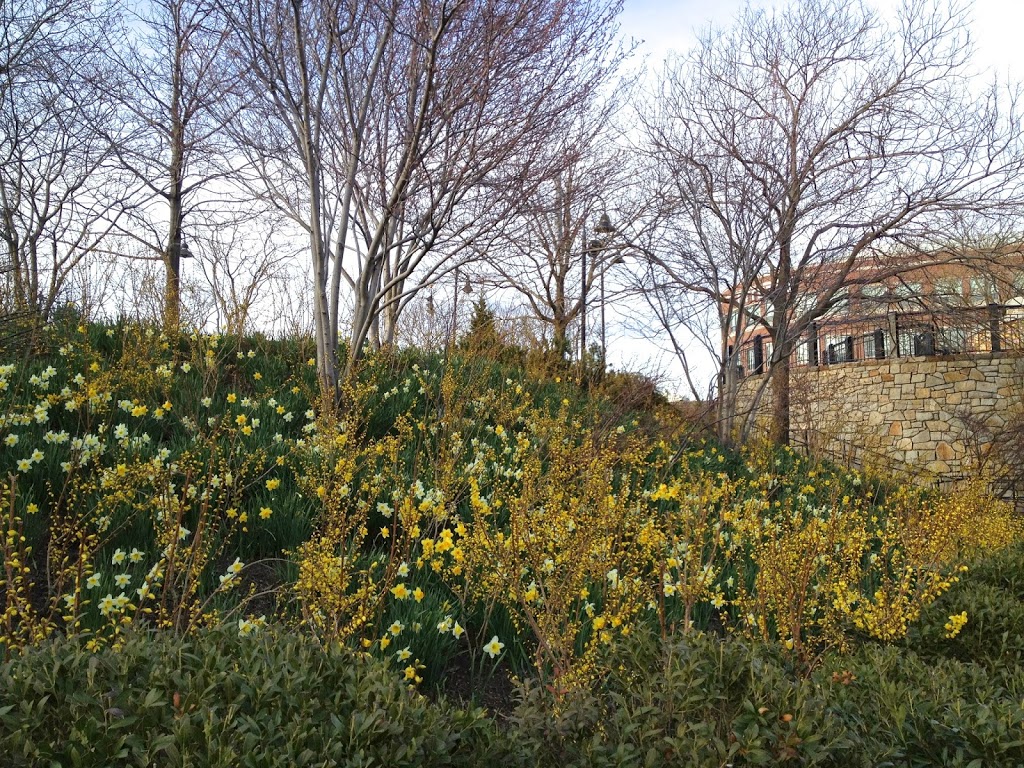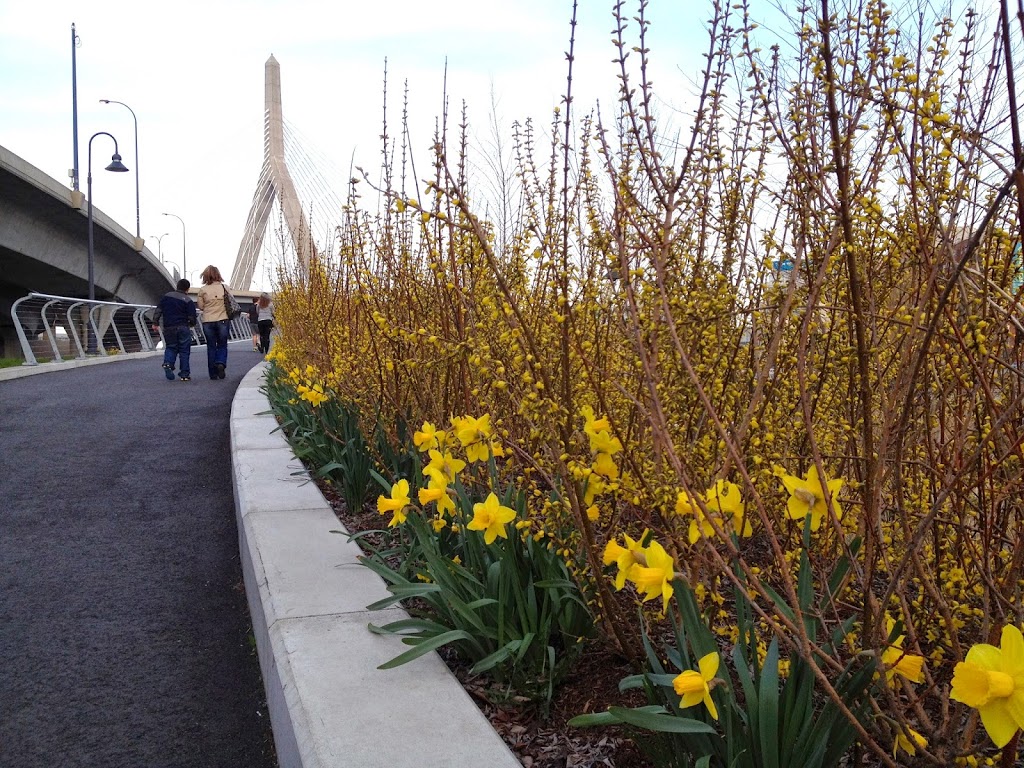I have a love/hate relationship with forsythia. It’s blooming right now and I love that it signals that Spring has finally arrived in New England.
If I were honest with myself, though, I’m actually not a huge fan of the plant. Its yellow, while bright and fresh, is also a bit garish, especially against the otherwise still brown and grey landscape. As a plant in the residential garden, I rarely use it (unless it’s a real favorite of a client’s). It is a leggy shrub that really only shows off for this brief period of time in the spring. To control the uncontrollable habit, many people prune forsythia like a hedge, which I think just adds insult to injury.
 |
| Naturalized planting of forsythia, daffodils and Ilex glabra in North Point Park |
There is, however, a particular application where I can’t help but be impressed by forsythia, and that is in naturalized, mass plantings. In a space that is large enough to have lots (and lots) of forsythia, unsheared, in their natural form, it can be quite spectacular. Plant it on a hillside, intermixed with evergreens and bulbs whose green foliage helps tone down the highlighter yellow flowers. It looks spectacular underplanted with yellow daffodils, which happen to bloom at the same time.
 |
| The yellow daffodils complement the forsythia and provide some greenery around the leggy shrubs |
In these mass plantings, forsythia really works and is a welcome sign of Spring. Plant it in mass, intermixed with green foliage, and you might start to love this plant…. just a bit.



